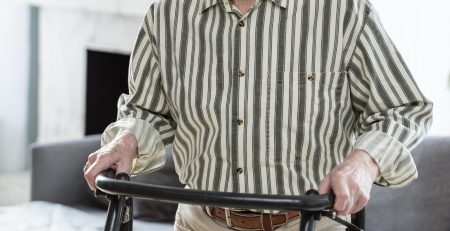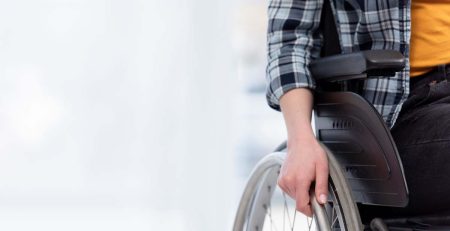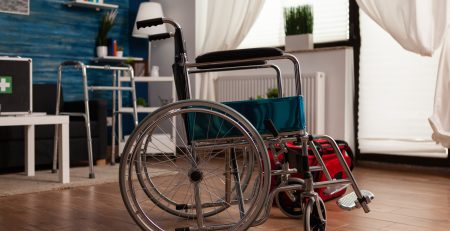- No products in the cart.
Tools to enhance independence at home
Individuals with mobility concerns and other health issues may have increasing difficulty with activities throughout their home. Whether simple or complex, individuals may need more support due to limited strength, impaired range of motion, pain, joint stiffness, and poor coordination. Thankfully, there are a variety of tools to assist individuals in achieving their goals, caring for themselves, and engaging in meaningful activities. Look into some of the following pieces of equipment for you or your loved one:
Button hook
Individuals with conditions that affect the use of their fingers, such as arthritis, stroke, or carpal tunnel syndrome, would benefit from the use of a button hook to manipulate fasteners on their clothing. This is an ideal way to stabilize the button and simultaneously insert it into the corresponding buttonhole.
Bed handle and railings
Many older adults or those with health concerns have issues getting in and out of bed. It can be difficult smoothly going from sitting to lying down and even more taxing to get up after sleeping in your bed. Individuals can use a handle that is inserted and stabilized between the mattress and the box spring. This helps individuals hold onto something while rotating upward to a seated position. Similarly, railings are mounted in the same place to ensure safety for individuals with dementia who may attempt to get out of bed. Railings can also aid individuals who have sleep disturbances and are prone to rolling out of bed.
Long-handled tools
There are a variety of long-handled tools that can assist individuals across all areas of the household. In the bathroom, there are long-handled foot scrubbers, long-handled sponges, and long-handled lotion applicators to assist in reaching the lower body during shower time. Additionally, individuals can use long-handled comfort wipes to assist in safely cleaning themselves while using the toilet. Related to dressing, individuals can use long-handled shoe horns to safely put their shoes on. Another helpful dressing tool is a sock aid (to safely put socks on without bending over). These tools can all help individuals who have had recent surgeries (such as joint replacements) and cannot bend over, as well as prevent falls in those with balance impairments.
Medical alert device
This is an important tool for everyone with acute or chronic health conditions, as this ensures for your safety across all settings. Medical alert devices relay important information to medical professionals in the event of an emergency. However, its primary function is to alert professionals when there is an issue in the first place.
Reminder alarm clock
Individuals may have difficulty reading small letters and numbers on alarm clocks, making reminder alarm clocks crucial. This can be an alarm clock with large easy-to-see numbers and buttons, or an alarm clock with a talking feature to alert you of the time periodically (or when you press a button). Such alarm clocks can also be programmed to remind you of certain events that you don’t want to miss. This is an important tool that serves as a memory and organization aid for those with cognitive impairments, mental illnesses, or difficulty with memory. Similar features exist on watches, phones, and wall-mounted clocks for assistance in all the rooms of your home.
TV ears
Turning the volume way up on the TV is not good for your ears, it can also isolate you from other individuals in the room who cannot hear over it. TV ears are small, discreet earbuds that allow individuals with hearing impairments to focus in on the TV instead of distracting external and background noise.
Seat cushions
Seat cushions themselves are a good way to relieve pressure from your bottom and prevent bed sores that may result from sitting or lying down for too long. Seat cushions with additional features are also helpful, as some come in a swivel format to allow you to move from seated to standing with ease. This places you at the right side of the chair so your only responsibility is standing up rather than turning and repositioning. Additionally, a seat riser is a good way for you to get out of low, potentially unsafe chairs. Seat risers offer lifting power so that you don’t have to do as much work when standing up. Similarly, toilet seat risers can assist in safely navigating the bathroom, with often low toilet seats.
Bidet
These great tools are the perfect option for individuals who have trouble reaching behind themselves and wiping/cleaning themselves when using the toilet. These tools come with washing and drying options to take all the leg work out of using the bathroom. Individuals can also get a toilet night light to accompany this tool for added safety and visibility at night.
Magnifier lamp
As individuals age, it may become difficult to see small print in books, bills, important documents, and more. Magnifier lamps can be used not only to add light to your reading materials but to magnify the print that is present.
Temperature controls
Safety is a key priority, especially for individuals with various health concerns. Temperature control can pose one of the biggest threats to safety in all parts of your household. There are several devices that assist in controlling temperature and preventing fires, burns, and other heat-related injuries. In the kitchen, individuals can opt for automatic shut-off safety devices for the stovetop and oven. Similar features exist for the microwave oven. In the bathroom, there are temperature-activated flow reducers to prevent individuals from accidentally placing the temperature up too high. This can especially be dangerous for individuals who have poor sensation and cannot independently determine when the water is too hot.
“Holding” items
Individuals with limited strength, poor motion, and impaired endurance would benefit from tools that hold important household items they use frequently. For example, hair dryer holders allow individuals to spend as much time as they need drying their hair. This also frees up the use of their hands to either relax and sporadically brush their hair — or even teeth — at the same time. In the leisure arena, individuals with arthritis and other hand concerns can benefit from a playing card holder. This tool relieves pressure and stiffness on small, sensitive joints that may result from holding the same position for too long.
In the kitchen, automatic jar openers prevent the need for any strain or effort exerted to open difficult (or even easy-to-open) jars and containers. For general household access, key-turner tools are helpful to prevent the need to pinch, grasp, and squeeze keys in order to enter the home. This benefits individuals who are at risk for developing or worsening hand injuries such as arthritis and carpal tunnel syndrome.
Big-button items
Remote controls, phones, microwave buttons, stove top dials, and more can be difficult for individuals with vision loss to read and safely use. Individuals with limited or poor vision capabilities can benefit from large-print items or devices with big, clearly-labelled buttons. These can make the difference in accessing buttons that are key to your comfort, safety, and accessibility.
As you can see, there are a wide variety of tools to assist those with minor to complex health concerns. This is by no means an all-inclusive list, so individuals should be sure to do their research to find tools that best assist their needs or ask their healthcare provider for assistance in accessing and using assistive technology within their homes and the community.















